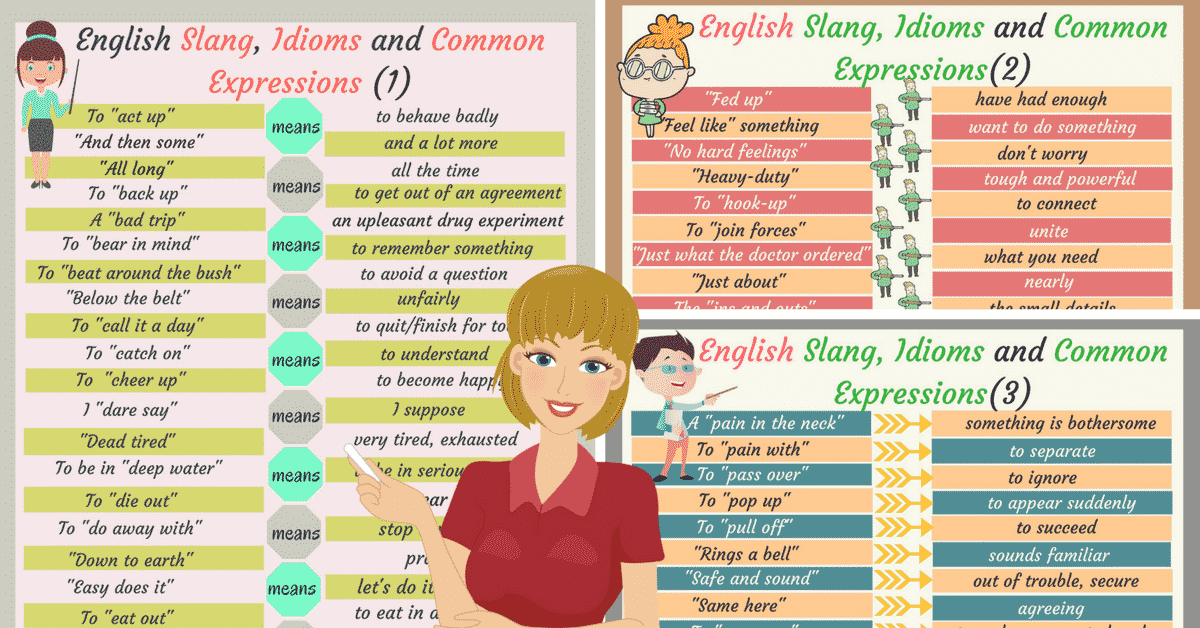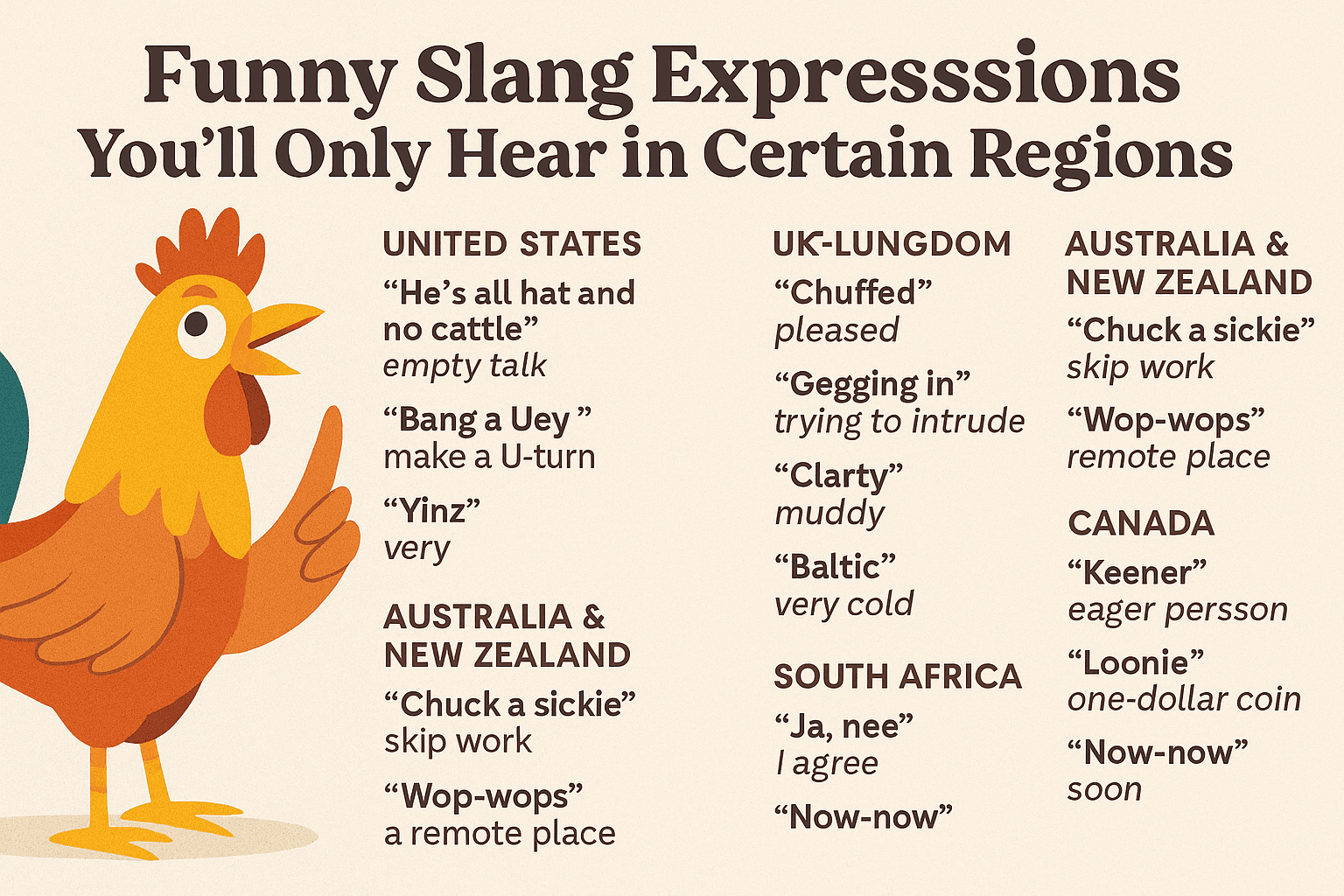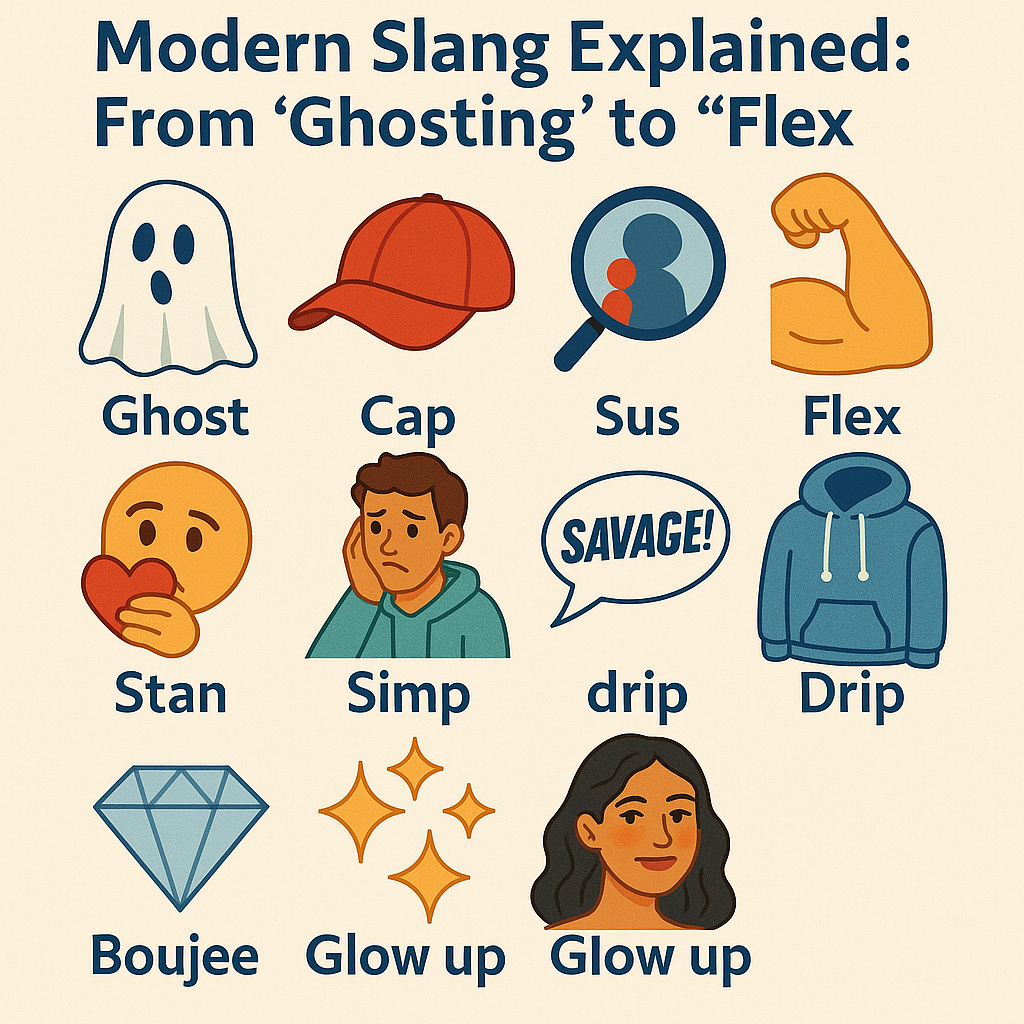If you’ve ever confused an idiom with slang—or wondered whether “kick the bucket” and “lit” belong to the same category—you’re not alone. Idioms and slang are often used interchangeably, but in reality, they serve very different purposes in language.
In this article, we’ll break down the real difference between idioms and slang, show you how they work, when to use them, and why both are crucial for sounding like a native speaker in any language.
Idioms and Slang: Definitions First
Let’s clarify what each term really means.
What is an Idiom?
An idiom is a fixed expression with a figurative meaning that doesn’t make sense when taken literally.
Examples in English include:
- “Break the ice” – to start a conversation
- “Spill the beans” – to reveal a secret
- “Hit the sack” – to go to bed
Idioms are deeply embedded in cultural knowledge and are used across generations and social classes.
👉 Learn more about idioms at Cambridge Dictionary.
What is Slang?
Slang refers to informal, often short-lived expressions used within specific groups or cultures. It’s how people play with language to sound modern, edgy, funny, or part of a community.
Examples:
- “Lit” – exciting or awesome
- “Ghost” – to suddenly cut off communication
- “Cap” – lie; “No cap” means “I’m telling the truth”
Slang can be region-specific, age-specific, and often evolves rapidly with trends and technology.
🔗 Explore slang on Dictionary.com Slang Dictionary
Key Differences Between Idioms and Slang
Let’s compare them side by side:
| Feature | Idioms | Slang |
|---|---|---|
| Meaning | Figurative and fixed | Informal, sometimes fluid |
| Context | Used in formal/informal | Almost always informal |
| Lifespan | Long-lasting | Often temporary or trend-based |
| Origin | Cultural or literary | Social groups, youth culture |
| Example | “Let the cat out of the bag” | “That party was lit” |
Why the Confusion Happens
Idioms and slang often overlap in tone—both can be casual, humorous, and deeply embedded in spoken language. This can lead to confusion, especially for:
- Language learners
- Non-native speakers
- People reading modern content or social media
For example, “beat around the bush” is idiomatic, while “drag” (to publicly criticize someone online) is slang. Both can appear in informal conversation but function differently.
Can Slang Become Idiomatic?
Yes. Some slang terms, over time, become idioms.
For instance:
- “Kick the bucket” was once slang, now it’s a well-established idiom.
- “Catch some Z’s” started as informal slang and is now widely recognized.
- “Hit the road” follows a similar evolution.
Slang that survives generational shifts solidifies into idiomatic use.
Idioms and Slang in Different Languages
Other languages also distinguish between idioms and slang.
Spanish:
- Idiom: “Estar en las nubes” – to be distracted
- Slang: “Chido” – cool (Mexican slang)
French:
- Idiom: “Donner sa langue au chat” – to give up on finding an answer
- Slang: “Bagnole” – slang for car
Understanding these categories helps in mastering not only vocabulary but also cultural nuance.
🔗 More on this from FluentU’s Language Blog
How to Learn Idioms and Slang Effectively
Here are a few tips:
- Watch Movies & TV Shows
Shows like Friends (for idioms) and Euphoria (for slang) are goldmines. - Follow social media trends
Twitter, TikTok, and Reddit are breeding grounds for current slang. - Use apps like HiNative or Tandem
Interact with real people and ask how they use certain phrases. - Keep a phrase journal
Write down idioms and slang you hear or read with meanings and examples.
Final Thoughts: It’s Not Just About the Words
Understanding the difference between idioms and slang isn’t just an academic exercise—it helps you:
- Sound more natural
- Understand culture
- Avoid embarrassing mistakes
- Connect with people authentically
Next time you hear someone say, “No cap, I was shook”—you’ll know it’s slang, not idiomatic. And when someone “bites the bullet” or “burns the midnight oil”—that’s classic idiomatic expression in action.
Master both, and you’ll go from textbook speaker to truly fluent communicator.




